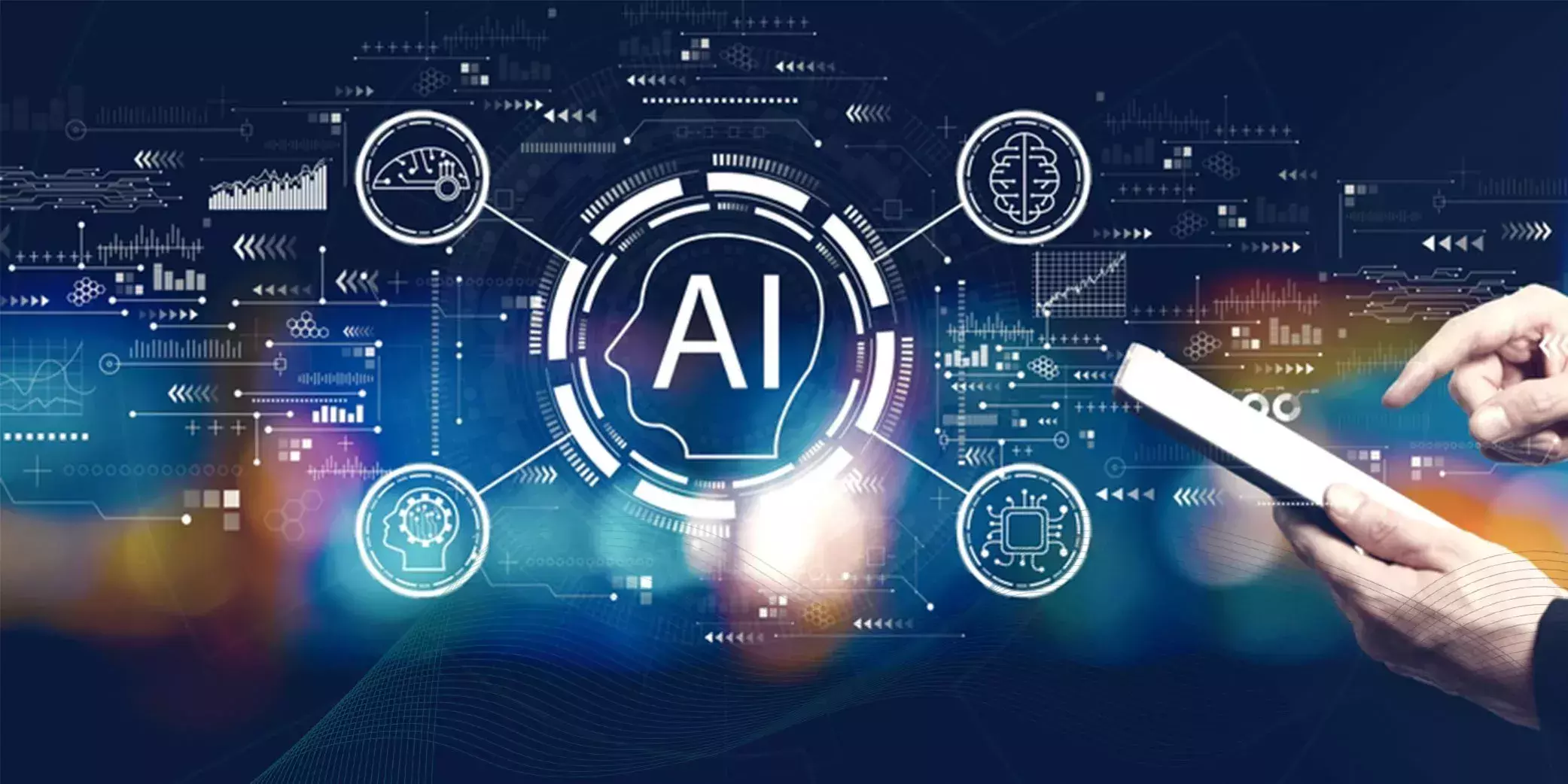Empowering GRC with AI: Unlocking Powerful Use Cases in Risk and Compliance
- GRC
- 18 July 23

Introduction
Global businesses spend billions of dollars and allocate a significant percentage of their workforce toward GRC functions. They are also seeking new technologies to optimize and streamline their GRC programs. According to the MetricStream-OCEG market readiness survey, 18% of businesses intend to invest in GRC technologies in 2023, with 29% planning to do so in the next 3 years. However, companies are still finding it extremely challenging to handle the scale and complexity of various GRC requirements due to the constantly evolving regulatory compliance and risk landscapes, along with maintaining the efficiency of the internal audit processes. Additionally, organizations are increasingly seeking proactive ways to assess, predict, and protect against traditional risks as well as emerging ones such as global pandemics, war, calamities triggered by climate changes, etc.
From risk identification and assessment to compliance monitoring and reporting, AI offers a range of possibilities that can revolutionize the way organizations approach GRC. AI capabilities can provide preventive, predictive as well as diagnostic approaches to secure and empower the GRC processes enabling businesses to not only thrive but derive maximum benefits in the present volatile market conditions. AI tools can help forecast events, understand trends, and anticipate occurrences in near real-time by analyzing massive volumes of data to safeguard their business.
We would like to highlight the cutting-edge AI use cases that are reshaping GRC practices, augmenting and streamlining traditional GRC processes, and delivering unprecedented insights, efficiency, and effectiveness.
AI in Risk Management
Recent bank crises have raised concerns about the stability of the banking system and its impact on the global economy. It has highlighted the critical need for policymakers and business leaders to work together to find comprehensive solutions to the challenges faced by the industry.
AI technologies are revolutionizing the way financial organizations approach risk.
- AI technologies can empower financial institutions to mine enormous amounts of distributed data and quickly realize insights that can help them protect against losses and boost ROI for their customers.
- By leveraging large, complex data sets, banks, and financial institutions can develop risk models that are more accurate than those based on standard statistical analysis. AI-based risk management allows banks to predict, assess and mitigate risks more effectively. Also, the AI tool is used to identify patterns in risk events, and issues, and recommend effective controls to mitigate risks.
- Smart automated planning and scoping of risk assessments using historical data analysis and recommendation of risk and controls are the steps towards ensuring continuous risk management. Also, AI-based recommendation of risk treatment strategies makes the mitigation processes more evasive.
- AI models can be used to assess the risk associated with certain decisions or actions. For example, AI models can help businesses evaluate the potential risks associated with entering a new market or launching a new product. Also, an AI system can analyze financial data, customer behavior patterns, and market trends to identify potential credit risks for a lending institution.
AI in Regulatory Compliance Management
One of the key challenges in regulatory compliance is ensuring awareness of regulatory updates. On average, a large financial organization may receive around 200 regulatory alerts per day, often with stringent timelines for the business processes to adapt to the regulation. Traditional processes for regulatory change management cannot track these rapid changes, leading to slower adoption time, and resulting in huge regulatory fines and other compliance risks.
Artificial Intelligence and machine learning algorithms in regulatory compliance can improve data governance, enhance continuous control monitoring capabilities, and automate compliance checks—all of which can reduce the risk of non-compliance. AI-powered systems can provide real-time insights, proactive alerts, and predictive analytics to help compliance functions to identify and address compliance issues more effectively and efficiently.
- Control management in large organizations where several thousand controls are tested is a very tedious and error-prone process. Controls are redundantly tested, leading to an inability to minimize risks proactively and maximize the efficacy of the controls. Control rationalization using AI algorithms evaluates and optimizes the effectiveness and efficiency of control activities within an organization's overall control framework and can provide insights into the effectiveness of controls by analyzing data and identifying trends. For example, AI tools can be used to identify trends in the number of control failures or to identify the controls that are most likely to fail, as well as detect the duplicate controls tested and save cost. AI algorithms can be used to automate the testing of controls to identify patterns in data that may indicate control weaknesses.
- Unsupervised learning algorithms, like clustering or anomaly detection, can identify unusual patterns or outliers in data that may indicate potential compliance issues and classify these issues accordingly.
- With the increasing volume and complexity of new and evolving regulations, it is challenging for organizations to identify specific rules and requirements within regulations that are relevant to their business. Manual processing of regulatory obligations has become untenable. AI tools can accurately identify obligation text from within regulations, extract that text for analysis, and enable human-in-the-loop review of individual obligations for applicability, relevance, and requirements. This empowers organizations to focus faster on the impact analysis and changes required to align their processes with the regulation. Natural Language Processing (NLP) algorithms are employed to process and analyze text-based data, such as regulatory documents. policies etc. It enables the extraction of relevant information, entity recognition, sentiment analysis, and topic modeling, supporting compliance professionals in understanding regulatory requirements, monitoring news for regulatory changes, or identifying potential compliance breaches in textual data.
AI in Cyber Risk and Compliance
AI is rapidly becoming a critical tool in Cyber GRC. In an era of the Metaverse, decentralized ecosystems, cloud instances, mobile, and billions of IOT devices spread worldwide, cyber threats have increased in frequency, complexity, and sophistication. AI-powered systems in cyber risk management can help organizations augment their cyber defense capabilities through advanced threat detection, predictive analytics, and real-time monitoring.
- AI models can be trained to detect anomalies in system behavior that may indicate potential cyber risks. This can be useful in identifying potential security breaches or operational failures.
- AI-powered threat intelligence can identify emerging threats and help to develop mitigation strategies. Simulation techniques like Monte Carlo can help a user to predict losses and their probability of occurrences.
- Continuous monitoring of regulations such as the General Data Protection Regulation (GDPR), and Payment Card Industry Data Security Standard (PCI DSS), can help to comply with IT regulations.
- AI tools bolster the capability of continuous control monitoring and reduce the costs of CCM by automating tasks and improving accuracy. Control mapping can be very accurate with AI algorithms.
AI in Audit Management
Audit management is a critical function for organizations to ensure compliance, identify risks, and drive operational excellence. With the advancement of AI, the audit landscape is undergoing a transformative shift.
- AI tools can bring efficiency and intelligence to the audit program. This can help auditors focus on high-risk areas and reduce the time and cost of audits.
- Recommendation of issues to highlight recurring items and action recommendations can bring efficiency to the operations.
- Fraud detection capabilities are faster with ML algorithms that traverse large datasets and identify irregularities or suspicious patterns, along with learning from historical fraud cases and applying that knowledge to detect similar patterns in new data. This can help auditors identify potential fraud risks and investigate them in a timely manner.
- AI tools can enable auditors to continuously refine their audit procedures and methodologies based on insights generated by AI systems.
Generative AI and LLMs in GRC
Lastly, coming to what’s being hailed as ‘the revolution of the year’—ChatGPT. Both ChatGPT and Bard, examples of generative AI based on LLM (Large Language Models), will also be game changers in the GRC world! LLMs can be employed in several areas—from generating reports and summarizing findings of risk assessment policies to generating ideas for new controls to mitigate the risk of fraud and, most obviously, acting as a guiding chatbot to end users.
MetricStream’s AiSPIRE: AI-Powered GRC to Augment Decision-Making, Prioritization, and Improve Efficiency
AiSPIRE, an industry-first, state-of-the-art cloud-based product offering from MetricStream, can empower your organization’s GRC functions with proactive intelligence backed by powerful AI- algorithms.
By leveraging large language models, GRC ontology-based knowledge graphs, and generative AI capabilities, AiSPIRE has the power to utilize the full potential of an organization’s existing GRC and transactional data. Unlike other GRC tools that rely on manually defined rules and workflows, AiSPIRE effectively utilizes your organization’s data to train advanced machine learning models and AI.
AiSPIRE can empower your organization to:
- Remove redundant controls and reduce control tests and costs with AI
- Gain intelligent control insights and enhance processes for scheduling and prioritizing control tests
- Improve risk management by quickly identifying areas that need to be optimized and minimizing potential risks
- Gain insights by asking simple questions using a machine learning-based prompt intelligence
Interested to know more? Request a demo today!
Download Product Overview: MetricStream AiSPIRE








